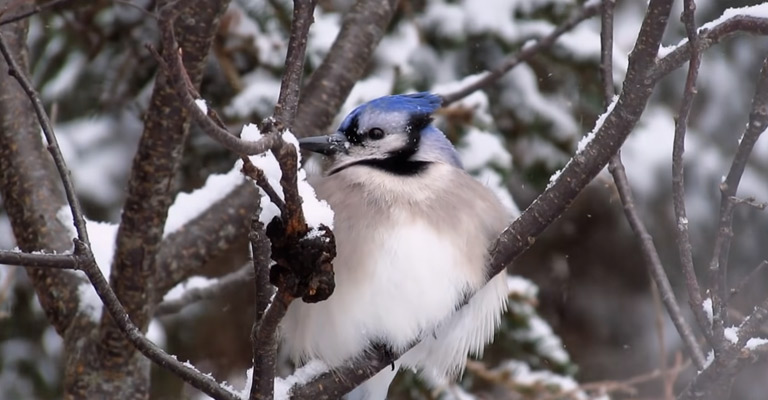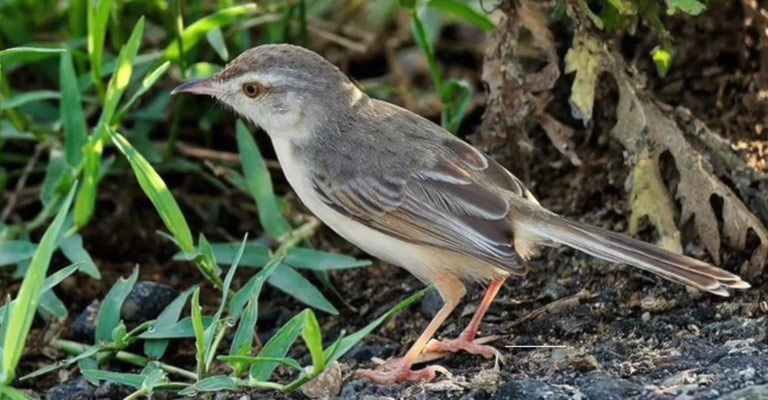When it snows, we go under our blankets. Some of our furry friends join us too! But what about our feathery friends? The majority of the leaves fall off from the trees too. So, where do birds go when it snows?
You might think humans are the most intelligent creatures on earth. But when it comes to birds, our tiny friends have marvelously developed a range of strategies to adapt to the icy weather.
Today, let’s explore how far can these small creatures go to survive the harsh weather to save themselves.

Where Do Birds Go When It Snows?
The answer is Migration, a term we can’t easily evade without passports.
Migration is the most common strategy for birds to escape the shivery winter. They are called migratory birds.
Every year millions of birds travel long distances just for warmer climates. Well! Not all of them though! They go to a place where the food is rich and the weather is more inviting.
The adventure begins at night with a genuine search for food. Insects are usually not found under the icy layer of snow.
The Arctic Tern, for instance, travels an astonishing 44,000 miles round trip between its breeding grounds in the Arctic and its wintering grounds in Antarctica.
Point to note that, migratory patterns vary for different species. Each species follows its schedule. However, birds often migrate south as summer winds up and the fall begins.
They return home when spring begins and fruits, seeds, and proteins are available in plenty. Birds who don’t migrate have to be more creative in order to escape the harsh weather. Keep reading to find out how.
The Non-Migratory Birds

Birds like the northern cardinal or blue jay don’t migrate during the winter, more like they can’t take the stress of the long flight to thousands of miles away.
Do they die during the winter? Well, not really! They have cultivated other smart measures to ignore the rough weather. Let’s peek a bit.
- Bushes Can Be Ideal
It snows often in winter. And when it does, most non-migratory birds hide in trees and bushes. Yeah! Some trees like Oak and Pine (and some others too) stand in winter.
Plus, some buildings also offer shade during the winter and birds can easily take shelter in it.
When the day is bright and the sun shows up, they come out to please their hunger. They usually melt down the ice with their body heat to drink from the icy cones. Most birds like woodpeckers or jays cache food for winters.
- Some Birds Are Lazy
Some birds don’t want to work hard! Rather, they search for old woodpecker holes in search of shelter. Birds who are highly used to cavity nesting like bluebirds, swallows, chickadees, nuthatches, and even the woodpeckers themselves look for left-out holes of other birds, especially of the woodpeckers.
A few other small birds like sparrows or wrens don’t even look for other birds’ holes. Rather they rest in the naturally formed crevices of trees and stay there during the winter.
- They Huddle!
Who doesn’t love to huddle? Remember how we huddled together with our cousins? Small birds such as bluebirds, chickadees, wrens, nuthatches, sparrows, and others also huddle together in some old birdhouses.
Additionally, some people leave out an empty box just for the sake of birds during the winter. The man-formed structures do offer quite a protection from the harsh weather.
These are some of the ways for birds to survive during the winter. Over time, birds have developed the skills to adapt the harsh weather. It has not been so hard for them after all.
Additionally, their feathers are a blessing and work as a thick coat. They can keep themselves warm during the winter.
Here are a few common questions that may be in your mind. Let’s hear them out.
What’s the Winter Survival Diet of Birds?

Natural food sources are out of service in winter. That’s why, finding food can be a constant challenge for birds during the winter.
You won’t believe many birds even switch their food habit and start feeding on berries, seeds, or other available sources. Here’s how they find food,
1) Seeds: Birds like finches, sparrows, and chickadees switch to a diet of seeds. Because seeds are easier to find in the winter. Additionally, seeds offer bird feeders with high-energy seeds and help them survive.
2) Berries: Some birds, such as robins and cedar waxwings, start feeding on berries. In the winter, berries are highly available on bushes and trees throughout the winter.
3) Insects: Tall beak birds like nuthatches and woodpeckers, search for insects hiding in tree bark or crevices. They use their strong beaks to drive their prey.
4) Scavengers: Crows and other scavenger birds don’t migrate. Instead, they search for foods in trash cans or piles of compost.
How Do Birds Know When To Leave?
Birds that migrate develop an instinct. Often it starts with the changes in daylight hours and temperature. The sensation of climate also triggers their migration instinct. It helps them determine their time of departure.
Can I Help Birds When It Snows?
Yes! Definitely, you can. Offer bird feeders with seeds, suet, or other bird-friendly foods. Additionally, set up birdhouses or nest boxes in your yard. Local birds can highly benefit from them. As water freezes during winter, you can ensure a continuous flow of warm water for the birds.
Final Words
Any living being will search for a safe place with their survival mode on. It’s not just about birds.
The flock of birds follow their instinct and migrate in order to survive. But not always they are welcome in another country. Hence, the most we can do is help them survive with possible nesting elements.
You can either share a box by your window shade or set up a light box in your backyard. Those who need will come up and take shelter in your property and leave when done.
Thank us later because it’s never a bad idea to help another life. Follow us to learn more about our feathered friends! If you have one at home, you will also need our articles to learn better about them and their behavior.